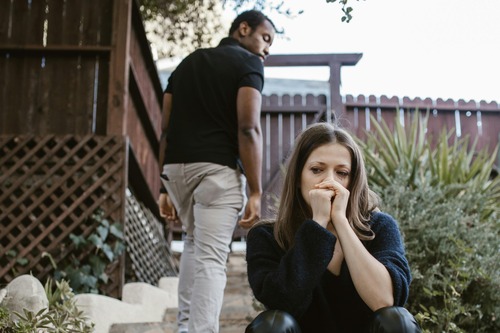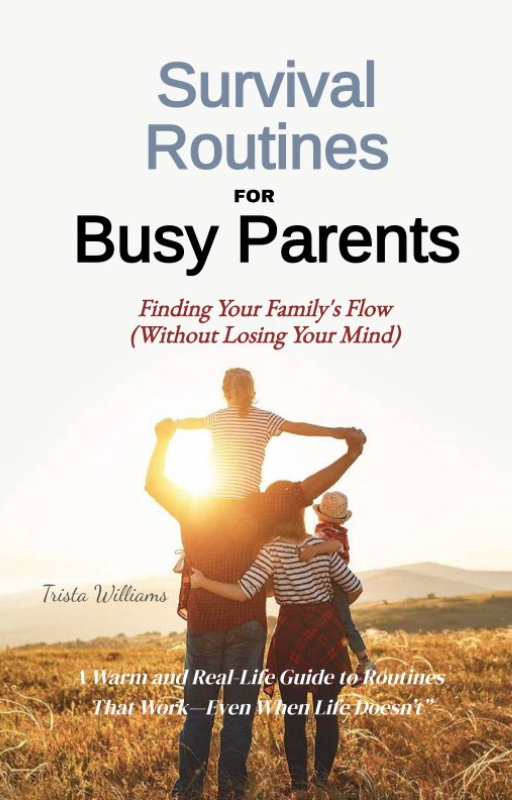Co-Parenting After Divorce: How to Do It Right (Even When It’s Hard)
Co-parenting after divorce isn’t always a walk in the park, but truth is: co-parenting can work—really work—when both parents commit to what matters most: the kids.

In this guide, we’ll walk through the best co-parenting styles, set realistic boundaries, and answer the most common questions parents ask. Whether you’re besties with your ex or barely speaking, there is a path forward.
What Is the Best Co-Parenting Style?
First, here's a quick breakdown of the Best Co-Parenting Styles:
| Style | Best For | Key Traits |
|---|---|---|
| Cooperative Parenting | Low-conflict relationships | Frequent communication, shared rules |
| Parallel Parenting | High-conflict relationships | Minimal interaction, clear boundaries |
| Bird’s Nesting | Short-term transitional setups | Kids stay in one home, parents rotate |
| Conflicted Co-Parenting | To be avoided | Ongoing disputes, no collaboration |
There’s no one-size-fits-all, but many experts agree that cooperative co-parenting is the gold standard. This style is built on:
- Open and respectful communication
- Shared parenting responsibilities
- Unified rules and routines
- A “kid-first” mindset
But honestly—this style isn’t always realistic. That’s where parallel parenting comes in. This style works well when exes have high conflict but still want to parent responsibly.
Each parent handles their own household without micromanaging the other.
What Are the Rules for Successful Co-Parenting?
Let’s make this easy. Here are the rules for successful co-parenting after divorce:
1. Keep the kids first. Always. Every decision should answer one question: What’s best for them?
2. Stick to your agreements. Reliability builds trust—for your ex and your child.
3. Stay neutral. Don’t talk about your ex in a negative way in front of your kids.
4. Communicate like professionals. Keep it respectful and focused on parenting.
5. Be flexible. Life happens—work together when plans change.
How Do Divorced Parents Co-Parent Effectively?
Effective co-parenting after divorce is like running a joint business—with your kids as the VIP clients. Here's what helps:
- Use co-parenting apps/tools to communicate and create schedules (like OurFamilyWizard or 2Houses).
- Create a shared calendar for school, sports, vacations, and more.
- Have a conflict-resolution plan. What will you do when disagreements happen? (Spoiler: they will happen.)
- Meet regularly (if possible) to talk about your child’s emotional and academic needs.
- Be consistent across homes. Kids thrive on structure. Try to align rules and expectations.

How Do You Co-Parent with a Difficult Ex?
It’s not easy, but it is possible. Here's how to handle high-conflict situations while staying sane: Best to go with a suitable co-parenting style.
1. Limit direct contact. Use written tools (text, co-parenting apps) to avoid emotional confrontations.
2. Set firm boundaries. Know what’s acceptable and what’s not. Then stick to it.
3. Stay child-focused. Don’t get pulled into old arguments. Keep the conversation about the child.
4. Avoid power struggles. Refuse to engage in drama. Let actions—not reactions—speak for you.
5. Consider professional help. A parenting coordinator or therapist can help mediate tricky dynamics.
What Is Toxic Co-Parenting?
Toxic co-parenting is when one or both parents engage in behaviors that harm the child emotionally or mentally. This can include:
- Bad-mouthing the other parent
- Using the child as a messenger
- Inconsistent parenting or sabotage
- Emotional manipulation or guilt-tripping
It’s painful—and often unintentional. But if you notice these patterns, it’s time to hit pause and reassess. Therapy (for you or your child) can be a lifesaver.
What Are Signs of Successful Co-Parenting After Divorce?
You’re doing better than you think if these signs are showing up:
- Your child feels secure and loved by both parents
- Both parents show up for school events, birthdays, and activities
- Communication is respectful and predictable
- You have consistent routines, even in two households
- Disagreements are handled privately—not in front of the kids
Remember: successful co-parenting after divorce isn’t about perfection. It’s about progress.
Best Tips for Co-Parenting After Divorce
Here’s a rapid-fire list of what actually works:
- Keep routines consistent
- Create a joint parenting plan in writing
- Stay emotionally neutral in interactions
- Use apps to keep communication clean
- Attend therapy or co-parenting classes if needed
- Be kind to yourself—it’s not always going to be smooth
Co-Parenting Boundaries (That Keep You Sane)
Clear boundaries make for healthier relationships—and fewer headaches.
Examples of healthy co-parenting boundaries:
- Keep communication kid-focused
- Respect each other’s parenting time
- Avoid surprise schedule changes
- No personal topics (past relationship drama = off-limits)
- Avoid venting to your child about your ex
Co-Parenting Checklist

Here’s a list you can follow or share with your co-parent:
✔️ Create a parenting plan
that outlines visitation etc.
✔️ Agree on school, medical, and discipline decisions
✔️ Set up a shared calendar
✔️ Choose communication tools (text, app, email)
✔️ Establish boundaries and expectations
✔️ Keep discussions respectful
✔️ Have a plan for holidays and vacations
✔️ Be consistent but flexible
✔️ Celebrate your child’s milestones together
✔️ Reevaluate and adjust the plan yearly
To make it a bit easier for you I have created a similar Co-Parenting After Divorce Checklist that you can download and print, text or email.
Co-parenting after divorce can be emotionally draining, but it also offers a chance to model resilience, cooperation, and unconditional love.
Want more support? Check out these next steps:
- Recommended Books on Co-Parenting
- Find a Family Therapist Near You
- Online Co-Parenting Courses






















New! Comments
Have your say about what you just read! Leave me a comment in the box below.